
Adam writes: I bought an overcoat in November and it’s served me well this winter. It’s probably my favorite thing in my wardrobe. Now that spring has come, it’s time to put it away until autumn. I’m writing because I’d like your advice on how often I should dry clean my coat. Is once a year sufficient? I’d like to have this coat for decades and want to make sure I don’t do anything to shorten its longevity.
The sniff test doesn’t always tell us when something needs to be cleaned. Obviously, things that come in direct contact with your body need to be laundered after each wear — shirts, underwear, and socks pick up your skin’s sweat and oils. But what about wool trousers, waxed field jackets, and tweed overcoats? Even with raw denim jeans, debates rage online over how often something ought to be washed (the correct answer is: not as often as your mom would like, but more often than denim nerds believe).
We decided to write a full guide on how often every type of garment should be cleaned, and we reached out to experts in various fields for their opinions — from clothing designers to textile conservationists to specialty cleaners. Here’s what they had to say.

Suits, Sport Coats, and Wool Overcoats
Conventional wisdom says tailored clothing should be dry cleaned as infrequently as possible, but that’s only half the story. Most dry cleaners are little more than drop off points for the same industrial cleaning facilities, which are often located just outside a city’s limits. Clothes are sorted into batches and cleaned using harsh chemicals. Tailored garments are then pressed into shape using a hot machine, sort of like how someone makes a panini.
That process can be rough on clothes. Traditionally, high-end suits and sport coats are put through a much gentler process and then hand pressed with an iron, but doing so requires a certain kind of time and labor that isn’t cost efficient for many people. One Savile Row tailor I spoke to shrugged when I asked him what people should do. “In London, we’ll clean and press garments for clients, but that’s obviously not possible if someone lives in the US,” he said. “But you still have to clean your garments. The best you can do is find a decent dry cleaner and have things cleaned only when necessary.”
One solution is to use a garment brush in-between each wear. Doing so will knock dirt and food particles out of the fibers, which will lower the number of times you have to send things to the cleaners. To use the brush, lay your garment down on a hard surface, such as a wooden table, and use short flicks of the wrist to dislodge dirt. You also want to brush in the same direction — never scrub.
Even regular brushing, however, won’t get out all the dirt and oils, so you’ll need to dry clean your garments every once in a while. If you don’t mind spending a little more money, we recommend Rave FabriCARE in Scottsdale, Arizona. They’re a full cleaning services operation — they have their own machinery, offer a sponge-and-press service (an even gentler process that can be used in-between dry cleanings), and press everything by hand (which helps retain the three-dimensional shape of a well-tailored jacket). Garments are then carefully packed and shipped back to customers. Their services are a lot better for tailored garments, which means you can have things cleaned on a more frequent basis.
“How often these garments should be cleaned will depend on how they’re used,” says Rave FabriCARE’s founder and President, Stu Bloom. “If a jacket has only been lightly worn, it could go a few months without cleaning. But if you wore the garment somewhere with high humidity, to a place where people were smoking, or to an outdoor event where you perspired a lot, you’ll need to clean the garment more often.”
Camille Myers Breeze, the founder of Museum Textile Services, says wool garments should be dry cleaned once every six months, at the very least, before they’re put away for seasonal storage. “Good dry-cleaning is expensive, but it’s a preventative measure for moth damage,” she says. Moths are attracted to the scent of human sweat and food particles, and they’ll lay eggs in stained clothes. Once those eggs hatch, the larva will eat your garment’s wool fibers. “Moth eggs and larva are tiny, so they can be hard to see. Moths also like places that are dark and not often disturbed. So before you store something away for the season, dry clean it. It’s a sure fire way to make sure it’s free from moth eggs.”
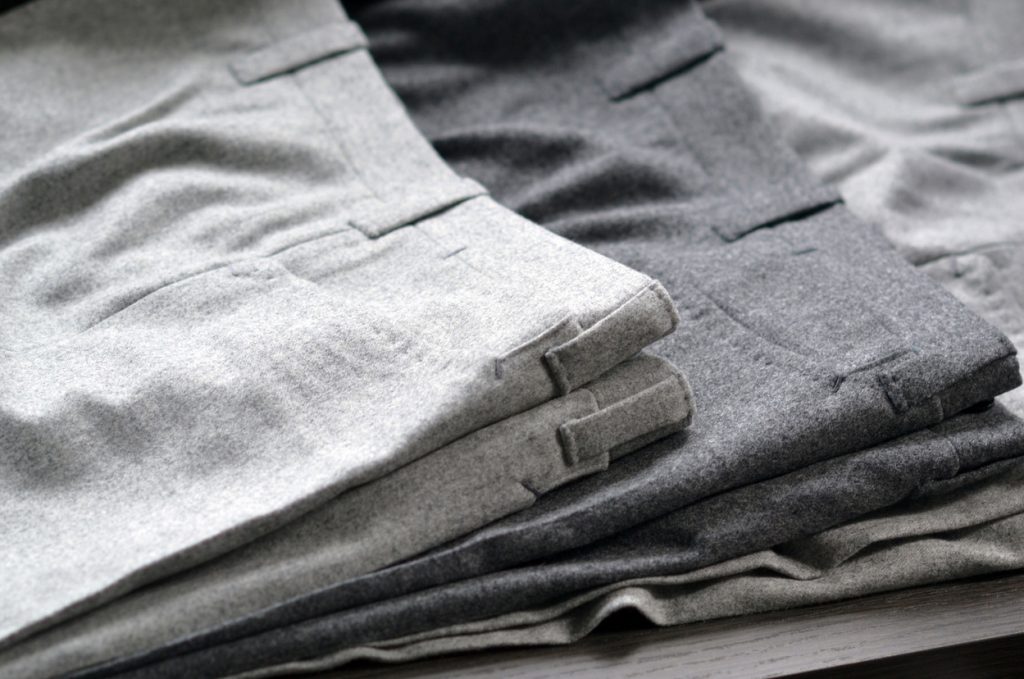
Tailored Trousers
Tailored jackets and overcoats don’t have to be cleaned very often, but trousers pick up dirt and human oils more easily from daily wear. Bloom recommends cleaning suit trousers a little more often than their accompanying jackets. “People often think they need to clean their suit trousers along with their jackets to make sure they don’t discolor at different rates. But a good dry cleaner will use fluids that are crystal clear, like water,” he says. “Not all dry cleaners do this, however. Some places will reuse the same dirty cleaning fluids, which ends up leaving the clothes filthier than when you drop them off. That’s why you get that discoloration.”
How often you’ll need to send things to the cleaner will depend on person to person — some people sweat more than others, some people wear things to dirtier environments, and some people wear things more often. A good rule of thumb is to send tailored trousers to the cleaners once every ten wears and jackets every fifty. For a normal, one-week rotation of tailored clothing, that means trousers are professionally cleaned once every two or three months, and jackets are sent once every six (usually done just before they’re put away for seasonal storage). Obviously, regular brushing will help with some of this. And you’ll want to clean things if they get stained. “Never press anything that’s been stained,” says Bloom. “Doing so will set in the damage.”
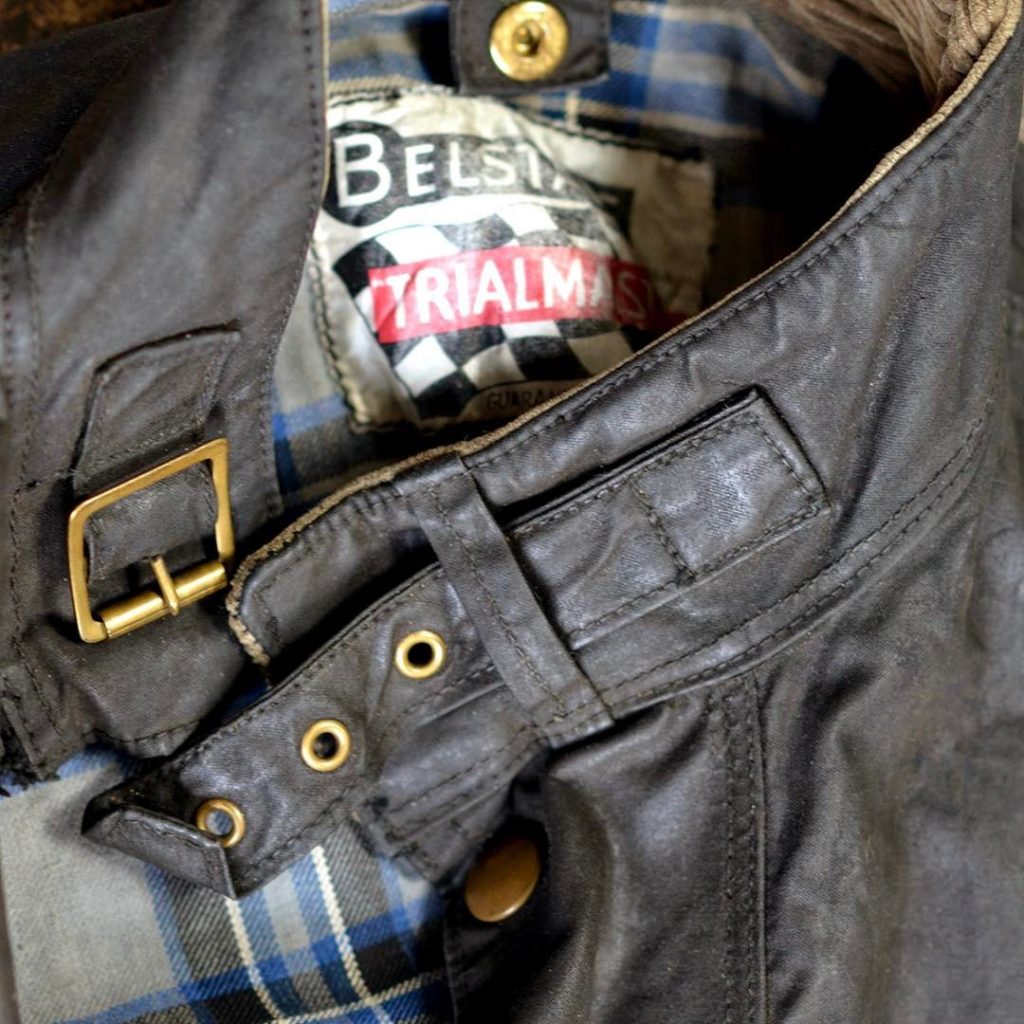
Waxed Cotton Jackets
Even a waxed cotton jacket needs to be cleaned every once in a while. Alain Gauthier, the founder of New England Reproofers, has been a specialist in this field for thirty years, cleaning and reproofing waxed cotton jackets for everyday wearers and collectors alike (one collector recently sent in a rare 70-year-old Barbour for restoration). If you’re a sportsman and wear a waxed cotton jacket while hunting, Gauthier recommends cleaning your coat about once a year. People who wear these for style purposes, on the other hand, may only need to clean something once every two or three years.
“Wax tends to attract dirt, and you can tell something is dirty when there are dark patches,” he says. “At the same time, creases around the elbows will start to get lighter, as the wax is wearing off.” Gauthier recommends people get things cleaned and reproofed when necessary so the garment’s fibers don’t break down, but doing so requires a bit of care and attention. “You can’t just throw a waxed cotton jacket into a laundry machine; the wax will come off and damage your machine. You also can’t dry clean it, as dry cleaning will strip off all the wax. You need to remove some of the wax, but not all of it, otherwise the next time you go to wax it, the wax will leak through and get into the lining.”
There are tutorials online for how to clean a waxed cotton jacket at home, but the process can be difficult and time-consuming. Your best bet is to send it to a specialty cleaner such as New England Reproofers. They have a full cleaning and reproofing service, as well as an enzyme wash for removing musty smells. As someone who’s fairly light on his clothes, I find I can take care of most issues at home with a damp sponge, but a full cleaning service may be necessary if you’re taking a jacket out into harder environments or buying something second hand.
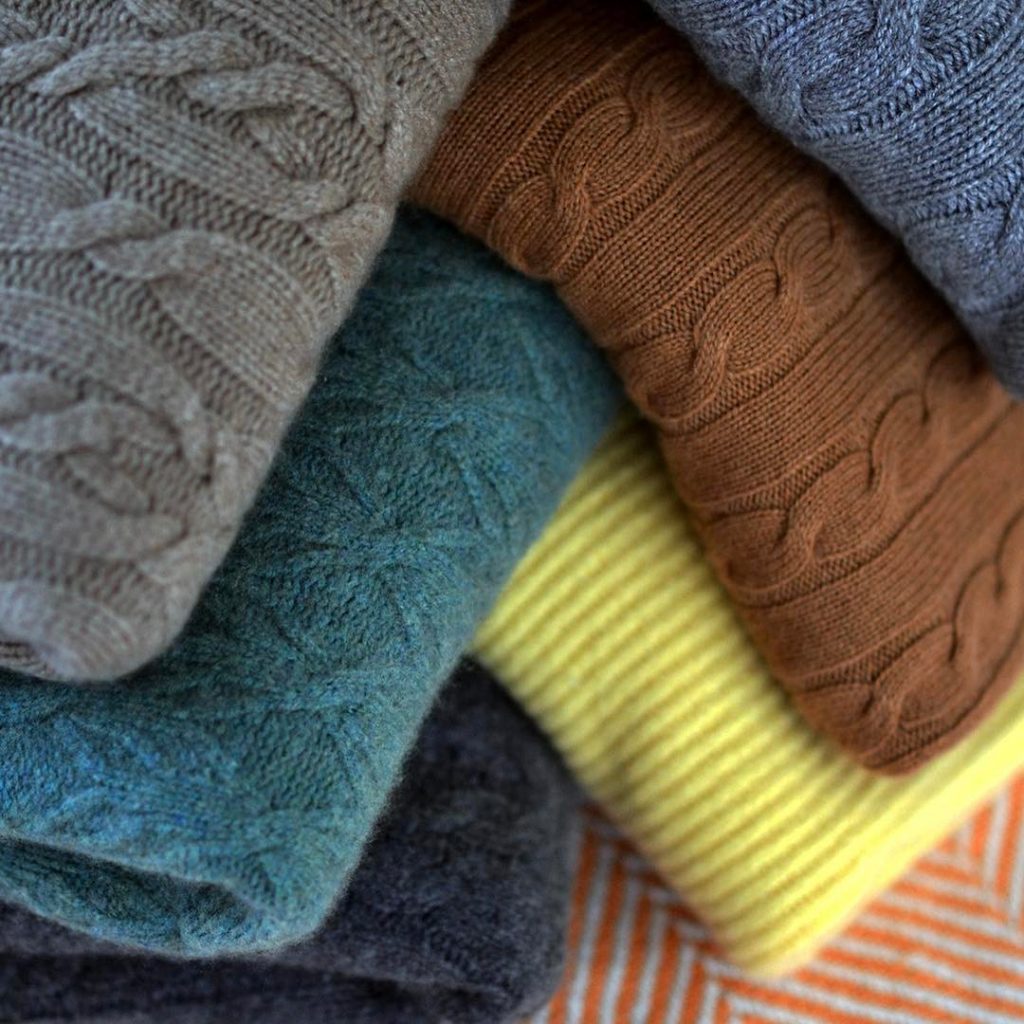
Knits and Woolen Accessories
Begg’s Creative Director, Lorraine Acornley, has been in the luxury woolen knitwear and accessories trade for over twenty years, designing sweaters and scarves for brands such as Albam, ESK, and Connolly. “It’s hard to say how often knits should be washed because it can vary so much from person to person,” she says. “If someone smokes or wears fragrances, they’ll need to wash sweaters more often. Or if they just wore something to a concert or outdoor event.”
I generally wash sweaters once every ten wears, and at the end of winter before things get put away for seasonal storage. Doing so lowers the chance they’ll be found by moths. Stout cotton knits, such as sweatshirts, can be thrown into the laundry machine, but finer cottons and anything made from wool, cashmere, or linen ought to be washed by hand. We have a full guide on how to handwash sweaters (it’s easier and quicker than you might think).
If you’re put off by the process, know that even Acornley sometimes throws things into the wash. “When we make sweaters, we get care instructions from the yarn supplier and pass that along to the consumer. Always read the care instructions,” she recommends. “You can lower the risk of you ruining a sweater by using a garment bag, and washing things on the wool wash cycle and using cold water. Looser knits should always be washed by hand, but I’ve put hardier sweaters into the machine. It’s gone wrong for me though, so you have to be prepared for that possibility.”
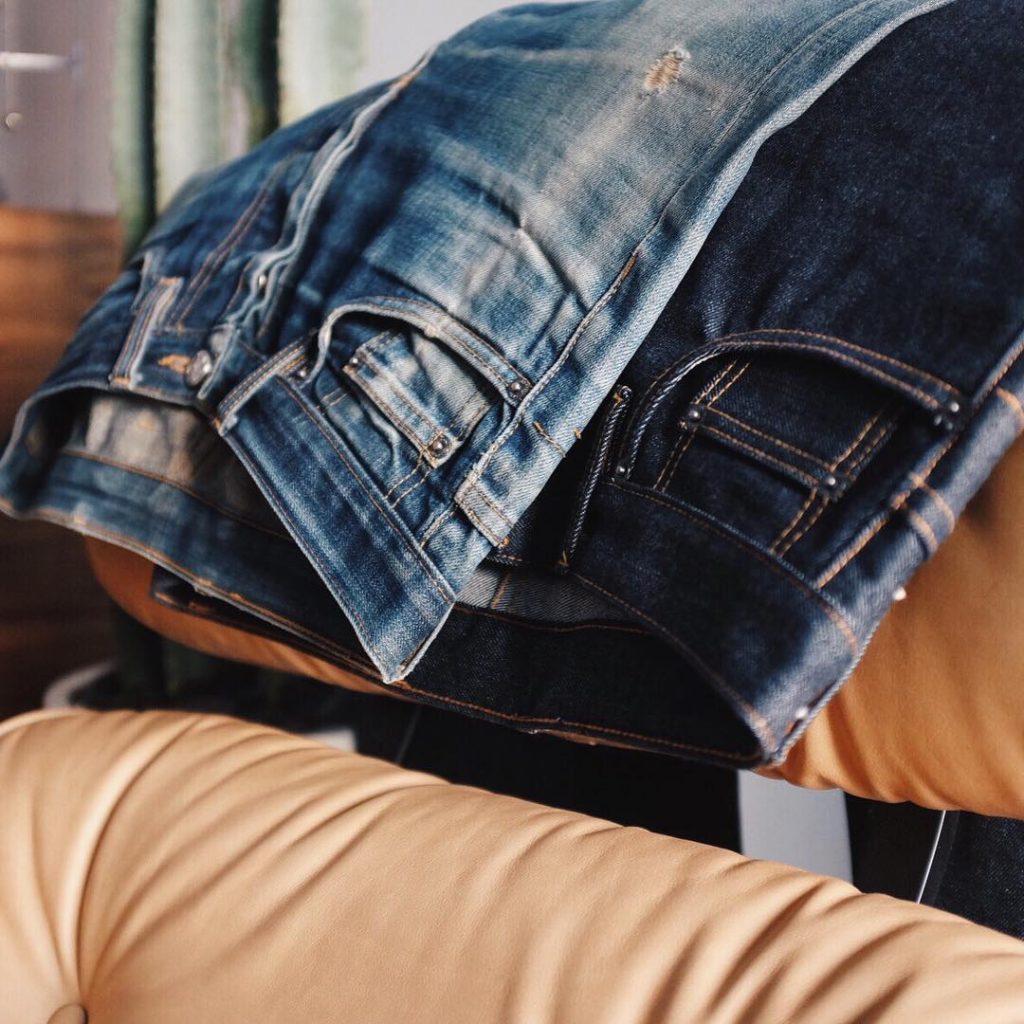
Jeans and Heavy Cotton Outerwear
When it comes to when you should wash something, few things stir up more passion than raw denim jeans. The rule-of-thumb often passed around online is that you should resist washing new jeans for at least six months — ideally longer, if you can stand it — to get higher contrast fades. A few years ago, University of Alberta student Josh Le made headlines when he wore the same pair of jeans for fifteen months. (Surprisingly, those jeans carried about the same amount of bacteria at the 15th-month mark as day 13 after washing).
Kiya Babzani, the co-founder of revered San Francisco-based denim shop Self Edge, has been fighting this idea for years. “As far as I know, this idea that you shouldn’t wash your jeans started in the late ‘90s when brands such as APC and Nudies started to get some play in underground fashion circles,” he says. “It’s true that if you want your APCs, Nudies, or other mass-market jeans to fade with a high contrast look, you don’t want to wash them often. This is because there’s little difference in the rate of indigo loss between high and low areas of friction. But if you buy unsanforized/ loomstate, rope-dyed denim, the indigo loss is going to vary greatly between those two areas, so you’ll get a high contrast look regardless of how often you wash your jeans. In the US, many people know that the Japanese make jeans that age very well, but not many people know that the Japanese guys who are into these repro styles also wash their jeans often. If you go to Inazuma, Lightning Magazine’s denim festival, you’ll see hundreds of well-worn jeans, many of which have been washed over fifteen times a year.”
So, how often should you wash your jeans? Babzani recommends doing so once every month or two, assuming you wear them 75% of the time. And skip the stuff about putting your dirty jeans in the freezer — another denim myth. “Your jeans will last longer if you wash them often because doing so removes the dirt, grime, and oils that can otherwise break down cotton fibers,” he says. Babzani is a little more lenient with heavy cotton outerwear, such as chore coats, trucker jackets, and other workwear styles. “It really depends on what you’re doing in your clothing. I personally only wash jackets when they get stained or if they pick up a scent, such as from smog or a BBQ.”
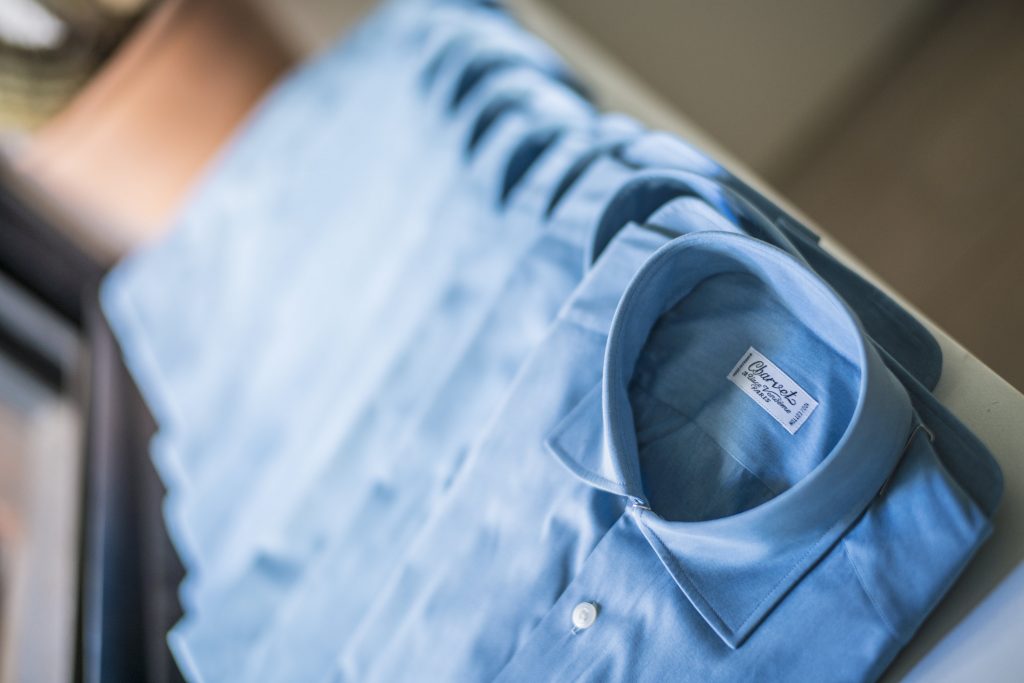
Shirts and Underwear
Shirts and underwear should be washed after every wear. The industry expert we consulted was your mom. If you don’t believe us, ask your mom. (e.g., “Mom, I looked up on the internet how often I should wash my underwear and this blog said they consulted you. Is that true?”).
Have a question related to clothing or style? Email us at contact@putthison.com. Your question may be used for one of our Q & Answer posts.







